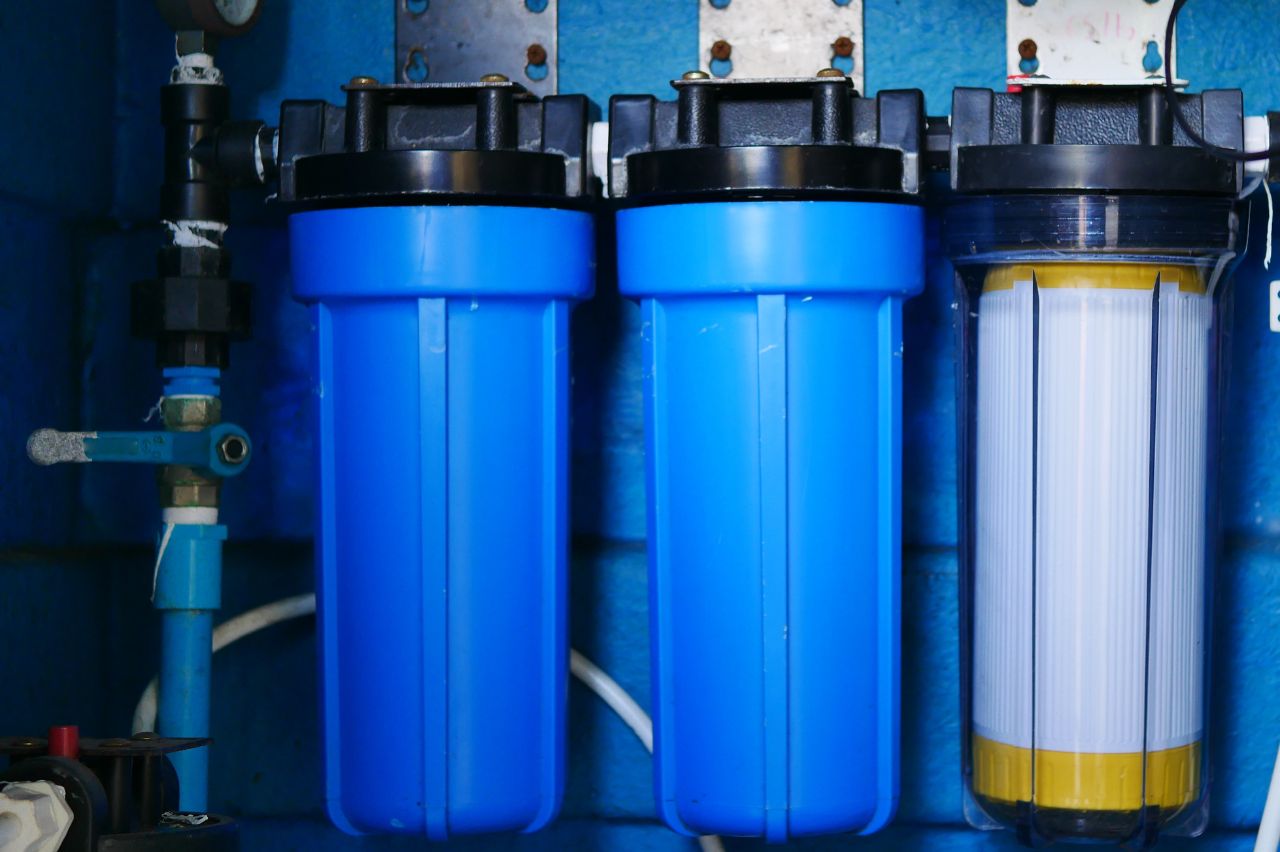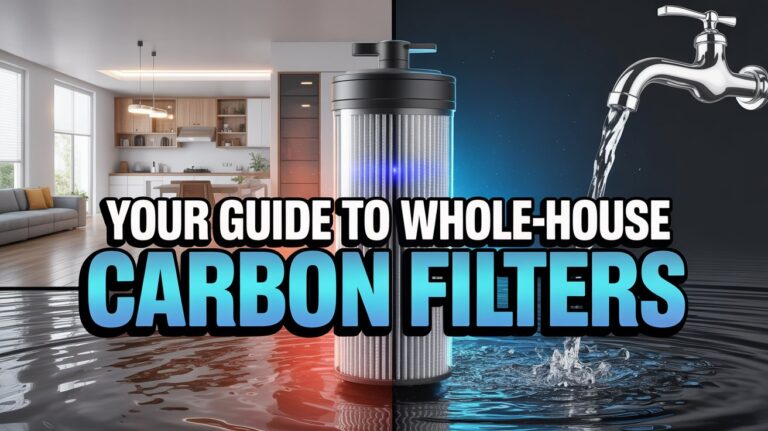Preparing for Emergencies: The Crucial Role of Water Treatment Systems
Have you ever wondered how you would secure safe drinking water during an emergency or natural disaster? It’s a question that might not cross your mind every day, but when faced with unforeseen circumstances, having a reliable source of clean water becomes a crucial concern. That’s where water treatment systems come into play. By preparing in advance, you can ensure you and your loved ones remain hydrated and healthy even when public water systems are compromised.
Understanding the Importance of Water in Emergencies
Water is the essence of life. It’s fundamental for drinking, cooking, and hygiene. During emergencies, access to clean water often becomes limited or contaminated, making the situation even more dire.
The Role of Water in Body Functioning
Did you know that around 60% of your body is made up of water? Water aids in numerous bodily functions, from regulating temperature to transporting nutrients and oxygen to cells. A lack of clean water can quickly lead to dehydration and a myriad of health issues.
The Reality of Water Contamination
In natural disasters like floods, hurricanes, and earthquakes, water sources can become rapidly contaminated with harmful bacteria, viruses, and chemicals. Relying on untreated water can result in severe illnesses, making effective water treatment crucial.
Types of Emergencies Where Water Treatment is Essential
You never know when you might find yourself in a situation where water treatment systems will be your best ally. Different emergencies present unique challenges, yet they all underscore the importance of having access to safe water.
Natural Disasters
Natural disasters often come without warning. Here are a few scenarios where water treatment plays a vital role:
Floods
Floodwaters can carry a variety of contaminants, including sewage, chemicals, and debris, into your water supply, making it unsafe to consume.
Hurricanes and Tornadoes
These weather events can disrupt infrastructure and public utilities, leaving you without access to safe water for extended periods.
Earthquakes
Seismic activity can fracture pipelines and mix clean water with contaminants from the soil or sewage systems.
Man-Made Emergencies
Not all emergencies are natural. Human actions or technical failures can also jeopardize your water supply.
Industrial Accidents
Chemical spills or leaks can infiltrate water supplies, posing serious health risks if not treated properly.
Power Outages
Extended blackouts can disrupt water treatment plants, making it necessary to have an alternative way to ensure your water is safe to drink.
Health Emergencies
During pandemics or other health crises, having a water treatment system can protect you from additional health risks posed by contaminated water sources.

Types of Water Treatment Systems
There are multiple types of water treatment systems designed to provide safe, drinkable water. Understanding the various options can help you choose the best system for your needs.
Portable Water Filters
Portable water filters are lightweight and easy to use, making them an excellent option for emergencies. They can remove bacteria, protozoa, and some viruses from water.
Reverse Osmosis Systems
These systems use a semi-permeable membrane to remove a wide variety of contaminants, including heavy metals and bacteria. However, they require a consistent water source and electrical power.
Ultraviolet (UV) Purifiers
UV purifiers use ultraviolet light to kill bacteria, viruses, and other microorganisms. They are effective but usually require a power source to operate.
Chlorine Dioxide and Iodine Tablets
These chemical treatments are easy to carry and use. While effective, they may leave an unpleasant taste in the water and are only suitable for short-term use.
Boiling
One of the simplest methods, boiling water can kill most pathogens. However, it requires fuel and equipment, making it less practical for long-term emergencies.
How to Choose the Right Water Treatment System
Choosing the right water treatment system depends on several factors, including the type of emergency you are preparing for and your specific needs.
Consider the Type of Contaminants
Different water treatment systems are effective against various contaminants. Ensure the system you choose can handle the specific types of contaminants you’re likely to encounter in an emergency.
| Contaminant | Effective Treatment Methods |
|---|---|
| Bacteria and Protozoa | Portable water filters, UV purifiers, boiling |
| Viruses | UV purifiers, chlorine dioxide tablets, reverse osmosis |
| Chemicals and Heavy Metals | Reverse osmosis, activated carbon filters |
| Sediments | Portable water filters, sediment filters |
Evaluate Portability and Ease of Use
In emergency situations, the ability to quickly and easily access safe water can be a lifesaver. Portable water filters and chemical treatments are generally more convenient than more complex systems like reverse osmosis units.
Assess Your Water Source
Consider whether you’ll be using water from rivers, lakes, or existing public water supplies. Some systems are better suited for treating water from natural sources, while others are designed to purify already treated but compromised water.
Power Requirements
Some water treatment systems require electricity or batteries to operate. Ensure you have a reliable power source available, or choose a system that operates manually or relies on chemical treatments.

Advantages of Having a Water Treatment System
Having a water treatment system in place offers numerous benefits beyond just ensuring access to clean water during emergencies.
Peace of Mind
Knowing that you have a reliable way to secure safe drinking water can significantly reduce stress during an emergency, allowing you to focus on other critical aspects of your situation.
Cost-Effective
Investing in a water treatment system can be more cost-effective in the long run compared to buying bottled water, especially during extended emergencies.
Environmental Benefits
Using a water treatment system reduces the need for single-use plastic bottles, promoting a more sustainable approach to water consumption.
Versatility
Many water treatment systems can be used for outdoor activities like camping and hiking, providing additional value beyond emergency preparedness.
Steps to Set Up and Maintain Your Water Treatment System
Setting up and maintaining your water treatment system is essential to ensure it functions correctly when you need it the most.
Initial Setup
Follow the manufacturer’s instructions carefully when setting up your water treatment system. Make sure all components are correctly installed and functioning.
Regular Maintenance
Regularly clean and replace filters as recommended by the manufacturer. This will ensure your system remains effective and prolong its lifespan.
Periodic Testing
Test your water treatment system periodically to confirm it’s removing contaminants effectively. Use water testing kits designed for this purpose to identify any issues before an emergency arises.
Store Backup Supplies
Keep a supply of spare filters, cleaning solutions, and other necessary components to ensure your system remains operational during extended emergencies.
Tips for Using Your Water Treatment System in Emergencies
When an emergency strikes, knowing how to use your water treatment system efficiently can make all the difference.
Prioritize Drinking Water
In emergencies, your first priority should be securing safe drinking water. Focus on treating enough water for drinking before addressing other needs like cooking or hygiene.
Conserve Water
Ration your treated water to ensure it lasts as long as possible. Use untreated water for non-essential tasks like cleaning whenever possible.
Pre-Treat Water
If your system involves multi-step treatment (e.g., filtering then boiling), set up a procedure to streamline the process and ensure you always have a supply of safe water.
Planning for Different Family Members
Every family member’s needs are unique, and your emergency water treatment plan should accommodate everyone.
Infants and Young Children
Ensure your system effectively removes all pathogens, as infants are particularly susceptible to waterborne illnesses. Consider having safe baby formula options that require minimal water preparation.
Elderly Family Members
Older adults have different hydration needs and may require a higher water intake. Ensure you have extra water treated and available for them.
Pets
Don’t forget about your pets! They also need clean water to stay healthy during emergencies. Ensure your water treatment system can produce enough clean water to meet their needs as well.
Expanding Preparedness Beyond Water Treatment
Comprehensive emergency preparedness encompasses more than just water. Here are additional steps to ensure you’re fully prepared.
Stock Essential Supplies
Beyond a water treatment system, stock up on non-perishable food, first-aid supplies, and essential medications.
Create an Emergency Plan
Develop a family emergency plan that includes meeting locations, communication strategies, and procedures for different types of emergencies.
Emergency Communication Devices
Ensure you have a way to stay informed about the situation and communicate with others. Battery-powered radios, cell phone chargers, and walkie-talkies are valuable tools.
Practice Drills
Regularly conduct emergency drills to ensure everyone in your household knows how to use your water treatment system and follow your emergency plan.
The Importance of Community and Collaboration
Individual preparedness is crucial, but community collaboration can amplify your efforts and increase overall resilience.
Community Water Sources
Identify communal water sources in your area, such as lakes or rivers, that you and your neighbors can access during emergencies. Share knowledge and resources to ensure everyone has access to clean water.
Local Government Resources
Stay informed about local government resources and emergency recommendations. Some municipalities may set up temporary water treatment facilities or distribute bottled water during disasters.
Working Together
Collaborate with neighbors and local organizations to develop community preparedness initiatives. By working together, you can pool resources and knowledge to create a more resilient community.
Real-Life Examples of Water Treatment Systems in Action
Real-world situations highlight the indispensable role water treatment systems can play during emergencies.
Hurricane Katrina
During Hurricane Katrina, many residents faced dire water shortages and widespread contamination. Portable water filters and chemical treatments became lifelines for countless individuals when public utilities were disrupted.
The Flint Water Crisis
In Flint, Michigan, residents faced serious health risks due to lead contamination in the water supply. Personal water treatment systems became essential for those seeking safe drinking water.
COVID-19 Pandemic
During the pandemic, disruptions in supply chains and public utilities emphasized the need for readiness. Families with water treatment systems felt more secure about their water sources when shopping became challenging.
Conclusion
Preparing for emergencies involves careful planning and the right resources to ensure your safety and well-being. Water treatment systems play a critical role in this preparedness, providing a reliable source of clean water when you need it most. By investing in the right system and maintaining it properly, you can face any emergency with greater confidence and peace of mind. Don’t wait until disaster strikes; take the necessary steps today to safeguard your water supply for tomorrow.







